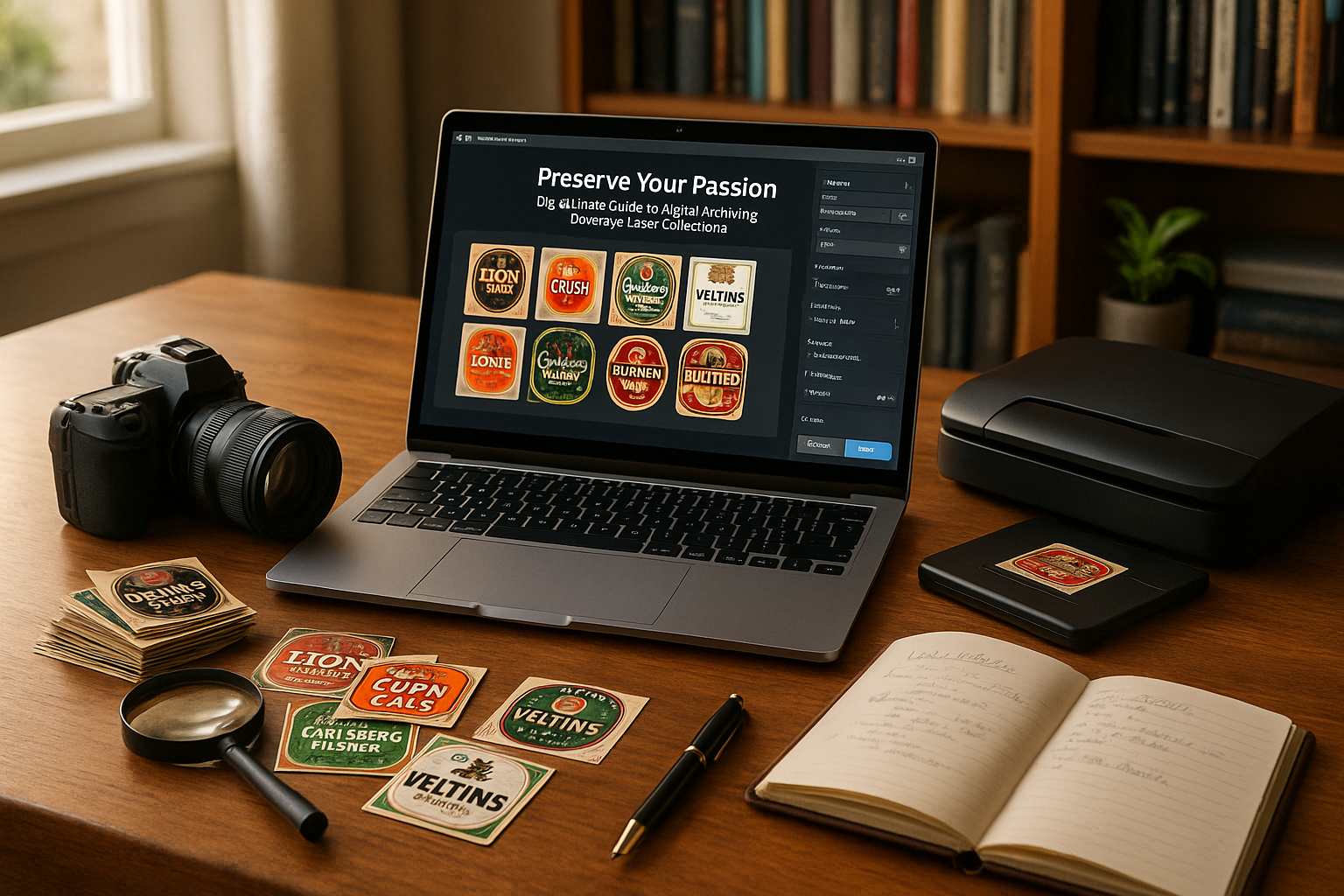In the dynamic world of modern branding, where digital designs and slick computer-generated graphics often reign supreme, a charming counter-movement is quietly gaining momentum. This trend celebrates the imperfect, the organic, and the profoundly human touch that can only be achieved through hand-drawn logos. As businesses vie for consumer attention in increasingly crowded marketplaces, they are rediscovering the value of authenticity and personal connection—qualities that hand-drawn logos deliver in abundance. 🌟 But what exactly is driving this shift from pixel-perfect precision to the artful nuances of pen and paper? Let’s embark on a journey to uncover the role that these tactile creations play in shaping contemporary branding strategies.
The resurgence of hand-drawn logos is not merely a nostalgic nod to the past; it is a strategic response to the evolving desires of today’s consumers. In an era defined by rapid technological advancements and impersonal digital interactions, people are yearning for something real and relatable. Hand-drawn logos evoke a sense of craftsmanship and individuality, telling stories that resonate on a personal level. These unique designs break through the noise, capturing attention with their distinctive character and human warmth. Through careful strokes and intentional imperfection, brands communicate authenticity, signaling to consumers that they prioritize creativity and personal expression over cookie-cutter conformity.
In this article, we will explore the multifaceted impact of hand-drawn logos on modern branding trends. First, we will delve into the psychology behind why consumers are increasingly drawn to these artisanal designs, examining the emotional connections they forge and the trust they engender. We will then discuss how brands across various industries are leveraging hand-drawn elements to differentiate themselves and create memorable identities. From artisanal coffee shops and boutique fashion labels to tech startups and multinational corporations, we will highlight diverse examples of how businesses are harnessing the power of pen and paper to stand out in a digital age.
Finally, we will look towards the future, considering how the hand-drawn logo trend might evolve in the coming years. Will it become a mainstay in branding, or will it remain a niche approach favored by a select few? By analyzing current trajectories and gathering insights from branding experts, we will attempt to forecast the potential directions this trend might take. Join us as we unravel the story of hand-drawn logos—where artistry meets strategy, and tradition informs innovation. This exploration promises to not only illuminate the past and present of branding but also inspire creative possibilities for the future. 🎨✨
The Evolution of Branding: From Traditional to Modern
Branding has undergone a tremendous transformation over the past few decades. From the early days of simplistic designs and basic color palettes, we have entered an era where branding is not just about aesthetics but also about storytelling and building an emotional connection with consumers. The shift from traditional to modern branding is marked by the integration of digital technologies, diverse design trends, and a deeper understanding of consumer psychology. One of the most significant trends to emerge in recent years is the resurgence of hand-drawn logos, which offer a unique blend of nostalgia and innovation.
Hand-drawn logos bring a personal touch that many digital designs lack. In a world saturated with perfect, digitally rendered graphics, the imperfections and character of a hand-drawn logo stand out. They reflect authenticity and creativity, resonating with audiences who are tired of cookie-cutter designs. This trend ties into a larger movement towards authenticity in branding, where consumers seek genuine experiences and products that reflect their values. As brands strive to differentiate themselves in a competitive market, adopting hand-drawn elements can provide a distinctive edge.
The rise of social media and digital marketing has further fueled the demand for unique branding strategies. With the ability to share content globally at an unprecedented rate, brands need to ensure their visual identity is memorable and shareable. Hand-drawn logos, with their distinct and engaging appearance, are well-suited for this purpose. They encourage interaction and can become a talking point among consumers, fostering brand loyalty and recognition. This approach is particularly effective for small businesses and startups looking to establish a strong market presence without the budget for large-scale advertising campaigns.
Understanding the Psychology Behind Hand-Drawn Logos
The appeal of hand-drawn logos goes beyond their aesthetic charm. They tap into the psychological principles of design, such as the Gestalt principles, which emphasize visual perception and the human tendency to see patterns. These logos often feature asymmetry, rough lines, and organic shapes, which can create a sense of warmth and approachability. This contrasts with the cold precision of many digital designs, making hand-drawn logos more relatable to audiences.
Moreover, hand-drawn logos can evoke nostalgia, reminding consumers of simpler times when everything was crafted by hand. This emotional connection can be a powerful tool in branding, as it helps create a deeper bond between the consumer and the brand. Nostalgia is a potent marketing strategy because it triggers positive memories and emotions, influencing consumer behavior and decision-making processes. Brands that leverage this emotional response can build a loyal customer base that feels a genuine connection to their products or services.
In addition to nostalgia, hand-drawn logos can convey a sense of craftsmanship and quality. They suggest that a brand values artistry and takes pride in its work, which can translate to perceptions of higher quality products or services. This perception is particularly beneficial for artisanal brands or those in creative industries, where the process of creation is just as important as the final product.
The Role of Technology in Modern Branding
Technology has been a driving force in the evolution of modern branding. The advent of digital design tools, social media platforms, and e-commerce has revolutionized the way brands interact with consumers. However, this digital revolution has also led to an oversaturation of visual content, making it challenging for brands to capture and retain consumer attention. As a result, many brands are turning to hand-drawn logos to stand out in a digital landscape.
Hand-drawn logos bridge the gap between traditional artistry and modern technology. While the initial design may be sketched by hand, technology allows for digitization, refinement, and scalability. This hybrid approach enables brands to maintain the authenticity and charm of a hand-drawn logo while ensuring it can be used effectively across various digital platforms. This adaptability is crucial in today’s fast-paced digital world, where consistency and versatility are key to a successful branding strategy.
Moreover, technology provides tools that make the creation and sharing of hand-drawn logos more accessible. Graphic design software such as Adobe Illustrator and Procreate offer features that allow designers to mimic traditional drawing techniques, creating logos that appear hand-drawn but benefit from the precision and flexibility of digital tools. This integration of technology ensures that hand-drawn logos can be easily adapted for use in different formats, from websites and social media to print materials and packaging.
Examples of Successful Hand-Drawn Logos
Many well-known brands have embraced hand-drawn logos to great effect. Take, for example, Innocent Drinks, whose logo features a playful, child-like sketch of a face. This logo perfectly encapsulates the brand’s fun and approachable personality, aligning with its mission to make natural, healthy drinks accessible to everyone. The simplicity and charm of the logo make it instantly recognizable and memorable.
Another example is Mailchimp, a marketing automation platform that uses a hand-drawn monkey as its logo. The quirky, cartoonish style of the logo reflects the brand’s friendly and innovative approach to email marketing. This design choice sets Mailchimp apart from competitors with more conventional, corporate logos, appealing to creative professionals and small businesses.
Both of these examples demonstrate how hand-drawn logos can effectively convey a brand’s personality and values. They show that even in a digital world, there is still room for creativity and individuality in branding. By opting for hand-drawn designs, these brands have successfully differentiated themselves and established a strong emotional connection with their audience.
Comparing Hand-Drawn and Digital Logos
To better understand the impact of hand-drawn logos on modern branding, it’s helpful to compare them with their digital counterparts. While both types of logos have their advantages, the choice between them depends on a brand’s identity, target audience, and overall branding strategy.
| Aspect | Hand-Drawn Logos | Digital Logos |
|---|---|---|
| Design Style | Unique, personalized, often asymmetrical | Precise, polished, symmetrical |
| Emotional Appeal | Nostalgic, warm, relatable | Professional, modern, sleek |
| Flexibility | Can be challenging to adapt without losing character | Highly adaptable and scalable |
| Brand Perception | Artisanal, creative, authentic | Corporate, trustworthy, reliable |
Check out the table above to see a side-by-side comparison of hand-drawn and digital logos. As you can see, hand-drawn logos are often associated with creativity and authenticity, making them a great choice for brands that want to convey a sense of artistry and individuality. On the other hand, digital logos offer precision and scalability, which can be beneficial for brands that require a clean, professional appearance across various platforms.
Blending Hand-Drawn and Digital Elements
Interestingly, many brands are finding success by blending hand-drawn and digital elements in their logos. This approach allows them to enjoy the best of both worlds: the authenticity and charm of hand-drawn designs and the precision and adaptability of digital graphics. By combining these elements, brands can create a unique visual identity that stands out in a crowded market.
For example, a logo might feature hand-drawn typography paired with a digitally rendered icon. This combination can add a layer of depth and interest to the design, capturing the attention of consumers while remaining versatile enough for various applications. By experimenting with different styles and techniques, brands can develop a logo that is truly one-of-a-kind, resonating with their target audience and reinforcing their brand message.
Watch this insightful video on the impact of hand-drawn logos on modern branding trends: The Importance of Hand-Drawn Logos in Branding by DesignWorld Channel.
The Future of Hand-Drawn Logos in Branding
As the branding landscape continues to evolve, the role of hand-drawn logos is likely to grow in importance. Consumers are increasingly seeking out brands that offer authenticity and transparency, and hand-drawn logos are well-positioned to meet this demand. Their unique ability to convey emotion and personality makes them a powerful tool for building brand loyalty and trust.
Furthermore, as digital tools and techniques continue to advance, the creation of hand-drawn logos will become even more accessible to designers and brands. This accessibility will likely lead to more experimentation and innovation in logo design, pushing the boundaries of what is possible and further blurring the lines between traditional and digital artistry.
In conclusion, hand-drawn logos are more than just a design trend—they represent a shift in how brands connect with consumers. By embracing the imperfections and character of hand-drawn designs, brands can create a lasting impression that resonates with their audience, setting them apart in an increasingly competitive market.

Conclusion
In conclusion, the exploration of hand-drawn logos and their influence on contemporary branding trends reveals a rich tapestry of creativity, authenticity, and emotional resonance. This article has delved into the historical context of logo design, underscoring the enduring power of handcrafted aesthetics in a digital age dominated by sleek, computer-generated graphics. The journey from pen to profit highlights a resurgence of interest in the tactile and the personal, elements that hand-drawn logos bring to the forefront of modern branding.
One of the key points addressed is the distinctiveness that hand-drawn logos offer. In a world awash with homogenized designs, the unique imperfections and personalized touches of hand-drawn elements stand out. These logos serve not only as visual identifiers but also as storytellers, conveying the narrative and values of a brand in an authentic manner. Companies that embrace this trend often find themselves more relatable and approachable to their target audience.
Moreover, the psychological impact of hand-drawn logos cannot be overstated. The human brain is wired to respond to art and creativity, making hand-drawn designs more memorable and impactful. This emotional connection fosters brand loyalty and encourages consumers to engage more deeply with the brand. The article has highlighted several case studies where companies have successfully leveraged hand-drawn logos to create a lasting impression and differentiate themselves in competitive markets.
The role of sustainability in branding is another critical aspect discussed. In an era where consumers are increasingly conscious of environmental and ethical considerations, hand-drawn logos align well with the demand for sustainable and ethical branding practices. These logos often symbolize craftsmanship and a return to simpler, more mindful production processes, which resonate with eco-conscious consumers.
From a practical standpoint, the process of creating hand-drawn logos requires a blend of artistic skill and strategic thinking. Designers must balance creativity with brand objectives to produce logos that are not only visually appealing but also aligned with the brand’s mission and values. This fusion of art and strategy is what transforms a simple drawing into a powerful branding tool.
As we reflect on the importance of this topic, it’s evident that hand-drawn logos are more than just a design trend; they represent a shift towards more meaningful and human-centered branding. They challenge brands to rethink their visual identity and embrace the imperfections that make them unique. In doing so, brands can forge stronger connections with their audiences and foster a sense of community and trust.
In encouraging readers to take action, it is essential to recognize the potential of hand-drawn logos in shaping the future of branding. Whether you are a designer, a business owner, or a branding enthusiast, consider the power of the pen and how it can transform your brand’s identity. Share your experiences and insights on this topic, as your contributions can inspire others to explore the possibilities of hand-drawn branding.
Engage with this content by leaving a comment below, sharing it with your network, or applying these insights to your own branding efforts. Together, we can celebrate the artistry and authenticity that hand-drawn logos bring to the branding landscape, fostering a more vibrant and connected community of brands and consumers alike.
Explore further by visiting reputable sources like Creative Bloq for insights into design trends, or Behance to discover inspiring hand-drawn logo projects. By staying informed and engaged, we can continue to elevate the art and science of branding in meaningful ways.
Let’s embrace the pen as a powerful tool for profit and purpose, and see where it can take us on this exciting branding journey. 🌟🖊️
Toni Santos is a visual poet and botanical dreamweaver, archiving the ephemeral beauty of dreams through nature’s delicate language.
In his artistic universe, every petal, vine, and root becomes a memory—an echo from the subconscious—preserved in time like pages from an ethereal journal. Toni treats plants not just as living beings, but as dream-symbols: vessels of forgotten feelings, silent wishes, and secret stories waiting to unfold.
His work is rooted in the belief that nature holds the vocabulary of dreams. Through botanical compositions, symbolic floral creations, and enchanted visual studies, he gives form to the unseen — the moment between sleep and wakefulness, where memory fades and imagination begins.
As the visionary behind Vizovex, Toni curates collections that feel like fragments of a dreamscape: moss-filled glass jars, mythic flowers, ancient botanical symbols reimagined. These creations invite you to explore your inner worlds and reawaken your sense of wonder.
His work is a tribute to:
The dreamlike language of plants and natural symbols.
The quiet messages found in forgotten moments.
The art of recording the soul’s memories in organic form.
Whether you’re a seeker of meaning, a lover of myth, or someone who drifts between the symbolic and the real, Toni welcomes you to explore an archive of dreams — one petal, one relic, one timeless whisper at a time





